Valancy's Bathing Suit and a Blue Castle of One’s Own
Rereading THE BLUE CASTLE, no FOMO, and the very idea of a man named Snaith.
“If you know, you know,” so the internet parlance goes, and I rarely do know, to be honest, because I’m middle-aged and spend most of my life at home reading novels by writers born in the last century, or even the one before it. But the circle of readers devoted to L.M. Montgomery’s novel The Blue Castle might be the one club in the world that’s giving me no FOMO, because I KNOW. Believe me, I know, and encountering others who share that knowledge is to meet a kindred spirit.
Of Montgomery’s oeuvre, The Blue Castle has two distinctions, the first that it’s her only novel set in Ontario, where she spent most of the final half of her life. And the second is that it’s one of her only novels intended for an adult audience, though this distinction means less to me, not simply on principle, but because I’m not sure that any of Montgomery’s works were strictly intended for children in the first place, which is an unfair limit to put upon them. I’ve been rereading her Anne and Emily books regularly since childhood and have found that each new stage of my own experience allows me to discern additional richness and layers of meaning in the texts, new aspects of these stories—Marilla’s maternal longing, that Dean Priest is a creep—that one has to be grown-up to truly understand.
As Alice Munro noted of Emily of New Moon, “What mattered to me finally in this book, what was to matter most to me in books from then on, was knowing more about life than I’d been told, and more than I can tell.”
I’ve written before about the literary legacy I received from my paternal grandmother—see “Danielle Steel, and the Person I Used to Be”—but it was my mother’s mother who delivered me L.M. Montgomery’s novels, beginning with a hardcover edition Anne of Green Gables as a Christmas gift in 1986, and a new Anne book for many Christmases after that. Credit must also go Kevin Sullivan and his Anne of Green Gables film, which was broadcast on CBC television in December 1985, and to its star, Megan Follows, who will forever be MY Anne.
I’m quite sure the popularity of this production was behind the availability of everything Montgomery had ever published in Seal mass-market paperbacks throughout my childhood, and I have vivid memories of sitting on the floor of what was Coles and would become W.H. Smith in Portage Place Mall in my hometown of Peterborough, covetously examining these titles. Only the first three Anne books were available in hardcover, and so the Seal books would be what I received from my grandmother from Anne of Windy Poplars on, and these were so cheap (not necessarily a bad thing) and I read them so often that even the couple of books I still have saved are now in pieces.
It never occurred to me back then that The Blue Castle was a novel for adults, certainly not in the way that, say, Judy Blume’s Wifey was distinct from Are You There God, It’s Me Margaret. This is partly because Montgomery’s tone remains consistent throughout all her books. Most of the children in her novels were never especially childish in the first place, certainly not the orphans being raised by elderly spinsters. Anne and Emily were both old souls, taken seriously by the narrative, whereas adult characters could be silly or downright ridiculous—Mrs. Rachel Lynde, or the elders in Magic for Marigold. Throughout her work, Montgomery expertly captures the very adult languages of gossip, grudges, and family feuds, showing that to have come of age is not necessarily to be exalted, and The Blue Castle is no exception.
Unlike Wifey, The Blue Castle’s subject matter didn’t seem especially forbidden to my 1980s’ sensibilities either—I grew up in the era of “Very Special Episodes” after all. Unmarried motherhood didn’t faze me (Cissy Gay, a local girl, comes home pregnant after a summer working as a waitress, her situation treated with compassion in the narrative, although her baby dies, and then she dies too—compassion does not extend so far as to let her get away with it), nor did Roaring Abel’s drunken rages, or that Valancy Stirling dares to defy her family to take up with Barney Snaith, the local reprobate, running away to live with him at his cabin—and she proposes to him.
Her family had been conspiring to have her wed off to a more sensible choice, an older widower with nine children who is said to be worth twenty thousand dollars: ‘“That sounds very fine,” said Valancy scornfully, “but it isn’t worth that”—she snapped her fingers—“compared to feeling Barney’s arms around me and his cheek against mine.”
While Valancy’s family finds such a proclamation “indecent,” I am sure I didn’t, though no doubt I lingered awhile on the line she delivers to her husband a few pages later: “I don’t want you to make love to me.”
It’s the antithesis to Wifey!
Perhaps this was a line assuring me that the novel was suitably chaste, that my young morals would remain uncorrupted by my reading—though I suspect I already had a sense that the language was old fashioned and that “making love” meant something else more, um, subtle back in 1926 (and it did! See the delightfully funny “A Brief History of Making Love”). Especially since plenty of hanky-panky is definitely going on in the text if you know where to look for it—and of course I was looking.
Like when Cousin Georgiana, the one sympathetic soul in Valancy’s clan, gives her “one of her famous candlewick bedspreads” after her scandalous marriage:
“For your spare-room bed, dear,” she said.
“But I haven’t got any spare-room,” said Valancy… “[I]t’s a lovely spread… and I’m so glad to have it. I’ll put it on my own bed. Barney’s old patch-work quilt is getting ragged.”
Valancy hasn’t a spare-room! Doesn’t such a lack just speak volumes?
(And now I’m amusing myself by imagining that “Barney’s old patch-work quilt” is some kind of euphemism.)
Of course it was the romance that I loved best about this book, even if it was with a man with the dubious name of Barney Snaith. (‘“The very idea of a man named Snaith!” said Second Cousin Sarah. “Why, the name itself is enough to condemn him!”’) Whose name isn’t actually Barney Snaith, the very point, a kind of frog prince tale, except instead of a kissing a frog, Valancy has placed her cheek against that of a local rogue about whom rumours circulate that he could possibly have committed murder.
He’s a dashing character, and he falls in love with her. HER. Valancy! Even though, of course, she’s no beauty, as we’re repeatedly told —“You aren’t exactly pretty, but you have some adorable beauty-spots,” her husband tells her, anticipating Bruce Springsteen in “Thunder Road,” the sort of compliment that, in our current moment, one might refer to as “negging,” but a hundred years ago, apparently, it made a girl swoon.
It was the romance that made me apprehensive about picking up this book again, especially considering all the other relationships I found romantic in my youth that were actually toxic and terrible—Troy and Lilaina, in Reality Bites (one of my foundational texts), John Cusack and whoever that woman was in High Fidelity, Mick Jagger and “Angie,” Judith Krantz’s Mistral and his daughter.
There is an entire sub-genre of movies I’ve written about before (“The 1991 River Phoenix/Lili Taylor vehicle, Dogfight, could only be construed as a romance by a certain sort of person, namely an awkward teenage girl with low self-esteem and no sense of her own narrative beyond being a character in someone else’s story”) that I’ve termed “‘90s Films About Hideous Women Finding Love,” a sub-genre that I ate up WITH A LADLE because it gave me hope that one day I, in all my own personal hideousness, might possibly find love too (which was ironic because none of the actors in these films were hideous, and I—like them—mostly just needed to learn there were t-shirt sizes other than “One Size Fits All” [who knew?]).
I was concerned that The Blue Castle would be more of the same, that this would indeed be a story of an unattractive old maid who defies expectations by becoming beloved by same random dude who drives his car too fast, which would have satisfied all my narrative requirements when I was age 12-20 and could be bowled over by the fact of a man who loves me “just as you are” (WHAT A THING!), but I have a different standard 30-some years later. And thankfully, it turns out that that this novel is not that kind of book in the slightest.
There is a conservatism to Montgomery’s approach to women’s experiences, one that frustrated me and a group of friends in a book club as we read Anne’s House of Dreams a few years ago, disappointed that grown-up Anne seemed to have lost her spark, her creative spirit. Becoming a wife and mother much like any other wife and mother—where’s the fun in that?
We were talking about this on social media, and I was fascinated to receive the perspective from two people, each with childhood experiences of fostering/adoption, who pointed out that to begin as a child in an orphan asylum and grow up to become an ordinary wife and mother is to actually to defy the odds, and is a most triumphant trajectory, a remarkable accomplishment requiring the overcoming of significant trauma, the defeat of all kinds of monsters—Odysseus has nothing on Anne Shirley as she makes her way to Ingleside.
And similarly, marriage for Valancy Stirling is not simply a pat happy ending either, but instead her sole ticket out of the drudgery that is her entire existence as the novel opens—she lives with her miserable widowed mother and the remarkably named “Aunt Stickles” (whose back Valancy is forced to rub daily with liniment), has her library books rationed, is fed food she dislikes, is made to wear her hair in an unflattering fashion, has to tolerate mean-spirited jokes about her unmarried status from uncles she can’t stand (“Valancy did not want to be cut out of Uncle Benjamin’s will. She had been poor all her life and knew the galling bitterness of it. So she endured his riddles and even smiled tortured little smiles over him.”)
Worst of all, she’s known to all her family by the uninspired nickname “Doss.”
“Valancy did not want to be cut out of Uncle Benjamin’s will. She had been poor all her life and knew the galling bitterness of it. So she endured his riddles and even smiled tortured little smiles over him.”
As I read the opening chapters of The Blue Castle, I couldn’t help thinking of Virginia Woolf (you may note that I am always thinking about Virginia Woolf), who lived from 1882-1941, mapping onto Montgomery’s dates of 1874-1942, both of them suffering with depression, both of them dying by suicide. And I was thinking about how Woolf’s ideas in A Room of One’s Own and Three Guineas speak to Valancy’s own struggle to become an agent in her life, that Valancy’s marriage to Barney Snaith is not convention, but instead a liberation—and how few opportunities for women’s liberation there were in 1926.
An unmarried woman without money becomes a ghost in her own life, homeless, uncanny, and it’s this sense of home that strikes Valancy as she considersa neighbour engaged to be married:
‘“I don’t envy Jennie the man,”… —Clayton Markley was not one of her many ideals— “but I do envy her the house… Oh, if I could have a house of my own—ever so poor, so tiny—but my own! But then…there’s no use in yowling for the moon when she can’t get a tallow candle.”
Valancy’s one freedom in her dreary existence as “Doss” is her Blue Castle, a fantasy world in her mind: “Most, if not all, of the Stirlings would have died of horror if they had known half the things Valancy did in her Blue Castle.” It’s a place of beauty, splendour, magic, and many lovers (“Oh, only one at a time.”). This fantasy life is what makes her Doss-life endurable, and it also gives her the courage and inspiration to make a leap and change her life when she receives a terminal diagnosis and realizes that her time for happiness is fast running out.
It’s what gives her the gumption to refuse her family’s narrow expectations for her, to dare to speak the truth to their faces (‘“She’s gone dippy, in my opinion,” growled Uncle Benjamin’), and take up with a community of people who are true to themselves and care not a bit local gossip—first Roaring Abel himself, when Valancy nurses his daughter Cissy on her deathbed, and then the infamous Barney Snaith, when she tells him of her terminal predicament and asks him to marry her.
“She’s gone dippy, in my opinion,” growled Uncle Benjamin.
And then things take a preposterous turn, it’s true. The scoundrel Snaith turns out to be an alter-ego, of several, but none of these involve him being a murderer, and instead the revelations about Valancy’s husband’s life (no spoilers here) only deepen her connection to him and underline her financial security, a fairy-tale transformation. Melodramatic and over-the-top, but there is such substance underlining these plot-twists that I forgive Montgomery her flourishes, because of passages like the following, which—to me, quite personally—describe the very essence of freedom:
“She got a pale green bathing-suit too—a garment which would have given her clan their deaths if they had ever seen her in it. Barney taught her how to swim. Sometimes she put her bathing-dress on when she got up and didn’t take it off until she went to bed—running down to the water for a plunge whenever she felt like it and sprawling on the sun-warm rocks to dry.”
The love story is a nice touch, but it only matters because it’s a portal to something worthy and real, springing Valancy Stirling from the prison of her life, to the freedom to wear a bathing suit all day long and go swimming whenever she feels like it—could there be anything less Victorian than that?
While Valancy doesn’t have a literal room of her own (theirs is not a large place, remember, not even a spare room), her entire life—through her relationship with Barney—becomes such a thing.
It’s the most radical, transformative kind of romance, and the reason that The Blue Castle continues to resonate with readers.
IYKYK.





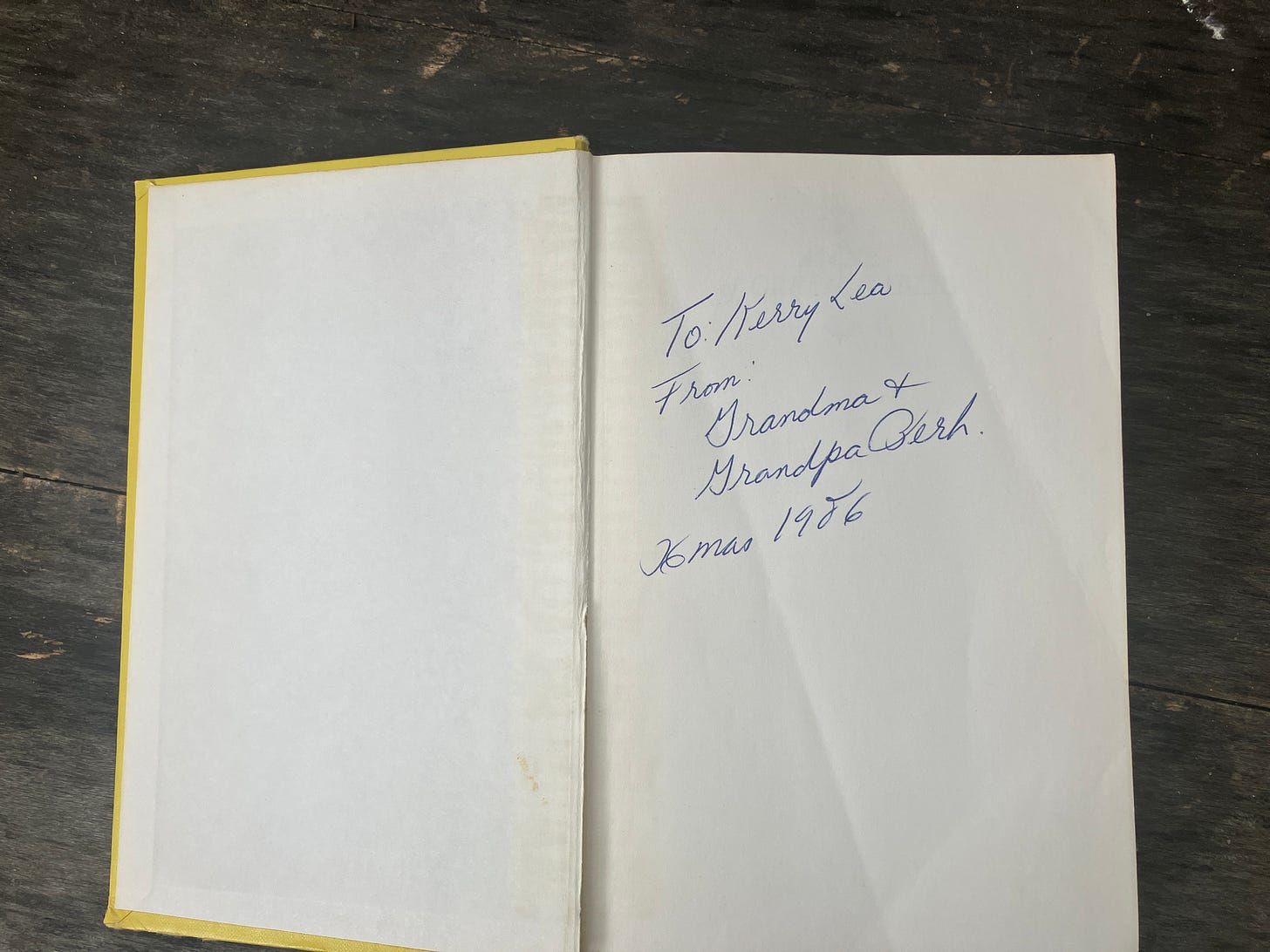
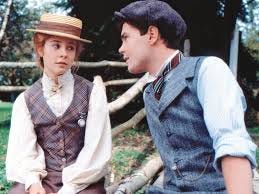


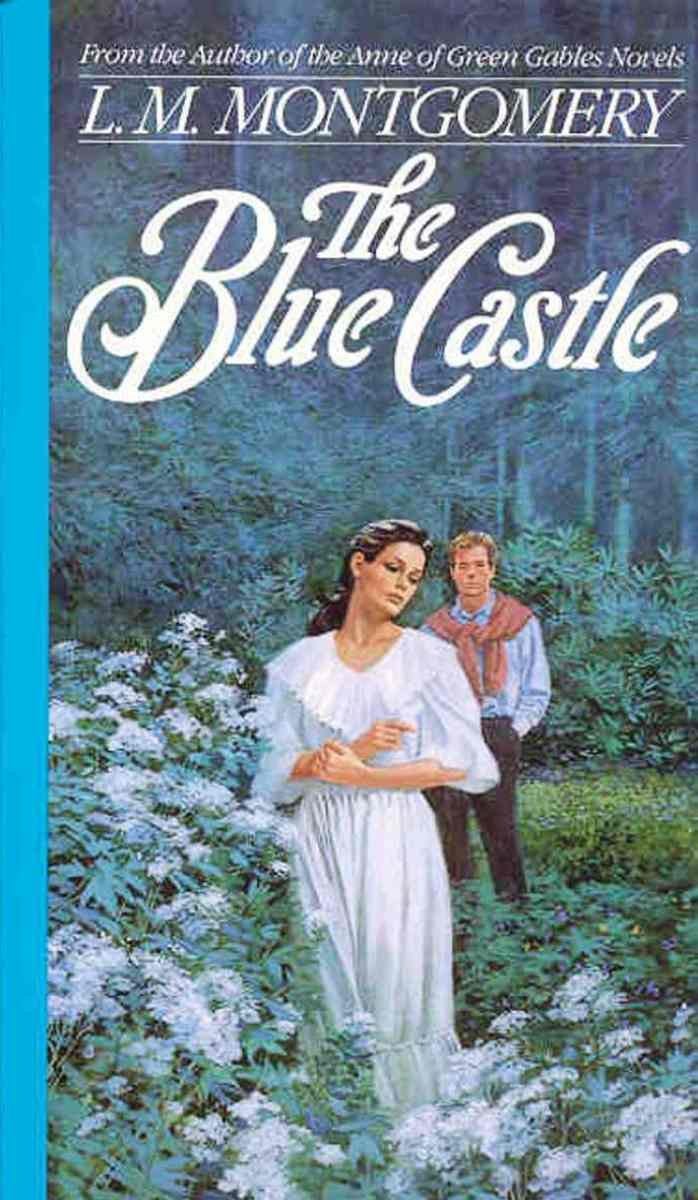
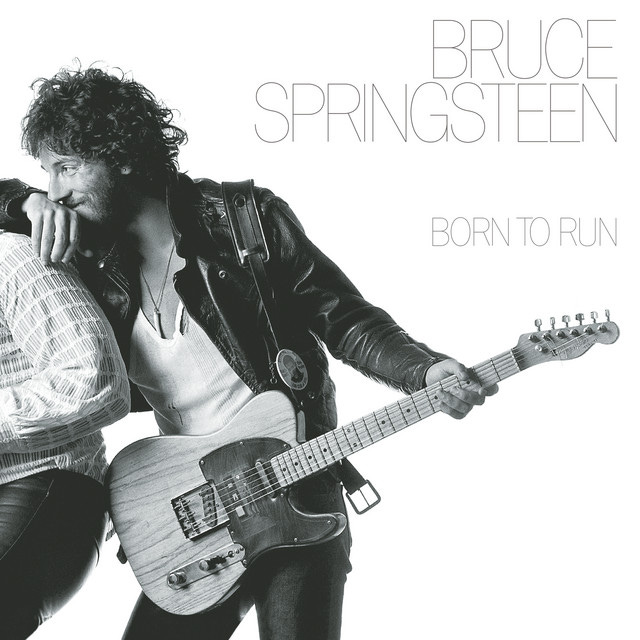



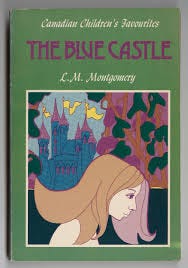
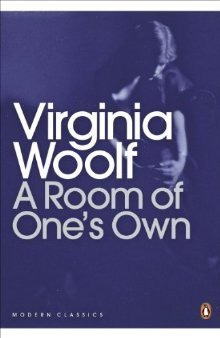
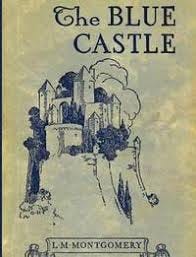
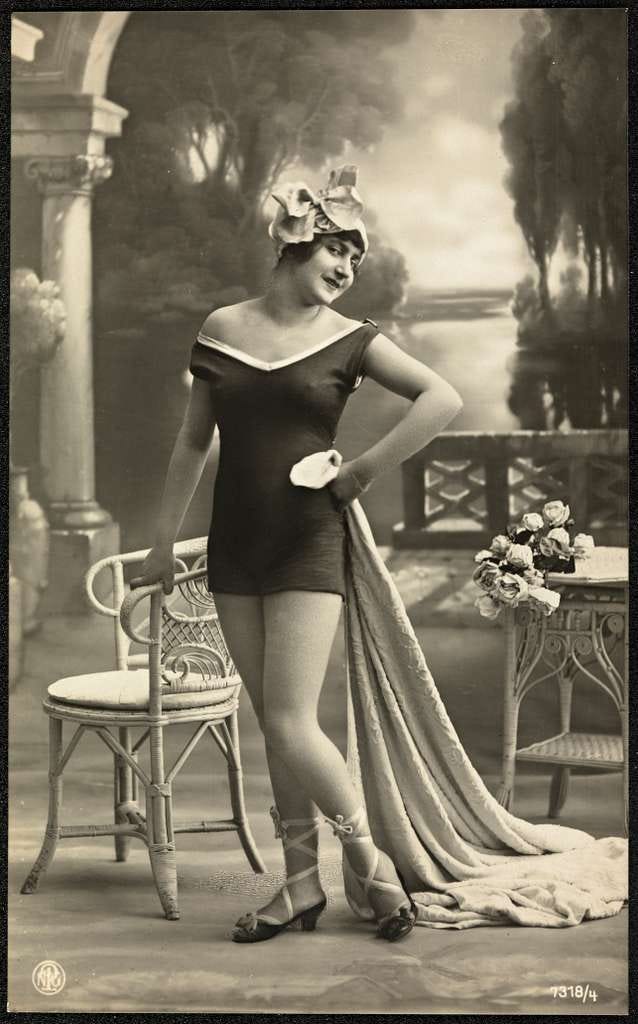
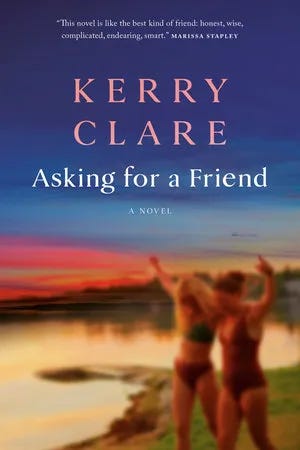
There definitely was passion between Valancy and Barney. She wanted to experience sexual love before she died and she knew Barney was the perfect man to do it with.
I also don’t like Anne and Gilbert as a married couple. He became condescending and she lost her spark and her vibrant personality. When Leslie and Ford fall in love…..they’re definitely more passionate than Anne and Gilbert!
I also think Ilse and Perry made a wonderful couple, although it took them a long time to get together.
Barney Snaith remains memorable and sexy ….99 years after “The Blue Castle” was published.
Oh, this was always my absolutely favorite LMM book! Blue Castle, then the Emily series... and my Anne favorites (Anne of the Island and Rilla of Ingleside being TOPS in my book [so to speak]).